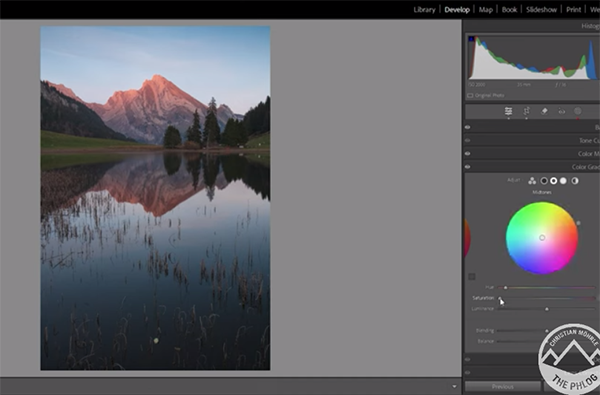Boost Reflections in Nature & Landscape Photos: A Quick Editing Hack (VIDEO)
Reflections in ponds, lakes and streams can be powerful elements for boosting the impact of images shot in the field. The trick is understanding how to accentuate nature’s mirrors when you don’t quite get things right in the camera.
This tutorial from the PHLOG Photography YouTube channel demonstrates a super simple post-processing hack to target sky reflections and others from the background to enhance the impact of outdoor photos and guide a viewer’s eye to the key element of a scene, and the simple technique takes instructor Christian Mohrle less than 12 minutes to explain.
Mohrle is proud of being recognized as one of Germany’s premier landscape photographers, and his how-to tips are popular with both amateurs and pros across the globe. His lessons always include a link beneath the video for downloading his sample Raw files, and we encourage you to take this opportunity and make the changes yourself as the steps are explained.

Today’s thoughtfully composed example is a pretty shot with a lake in the lower half of the scene and imposing mountains looming in the distance. The problem is that reflections of the peaks aren’t quite as vibrant and compelling as they can be without a bit of help from Lightroom. A few local exposure adjustments are also required to make a perfect transformation.
Mohrle begins by merging a three-image HDR; a versatile technique that’s well worth understanding for just about every landscape photo you edit. Then he walks you through several straightforward adjustments that create a perfect starting point for the selective masking that follows.
He opens Lightroom’s Basic panel and changes the profile from Adobe Color to Adobe Landscape which immediately pumps up saturation and adds reddish tones to the distant mountains. He also modifies White Balance and increases Clarity and Vibrance.

Now it time to employ preliminary masks for enhancing the sky with a Linear Gradient and a few other selections that balance out the image. With the photo significantly improved Mohrle reveals his powerful Masking hack that embellishes the reflections, and he explains the process from beginning to end.
The edit concludes with thoughtful color grading and careful sharpening, and we think you’ll be duly impressed after viewing Mohrle’s before/after images. There are many more instructional videos on Mohrle’s popular YouTube channel so be sure to pay a visit often.
And don’t miss our recent tutorial featuring another post-processing instructor who demonstrates how to sharpen nature and landscape photographs with a selective technique that delivers maximum precision.









